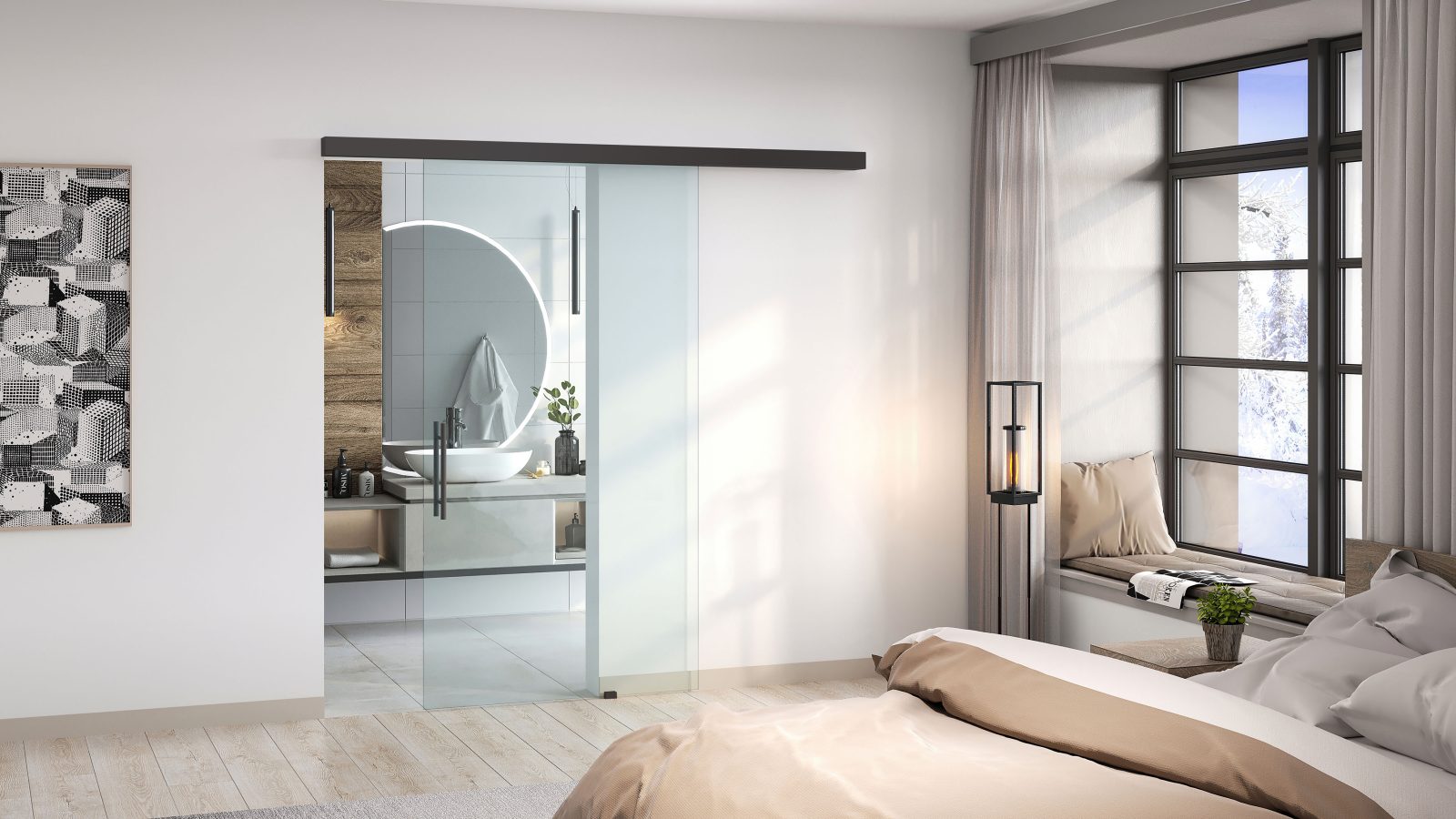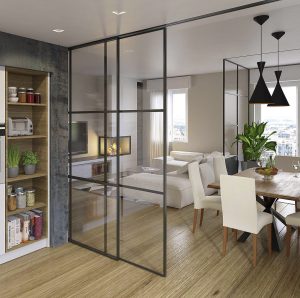How glass sliding doors are transforming interiors


Simon Boocock, MD at CR Laurence, talks about why sliding glass doors are proving so popular in domestic as well as commercial settings.
Over the last few years, demand has grown for premium glazing solutions that add value, as well as a high-end aesthetic, to projects. Once considered something of a niche feature, sliding glass doors have become highly sought after and are now being specified in a growing number of commercial as well as residential settings.
Open-plan living has been a firm favourite with homeowners for quite some time now. However, as the way people use their homes has changed, particularly post pandemic, the trend has evolved with broken-plan schemes becoming more prevalent.
Providing the best of both worlds, it embraces a more flexible layout where open-plan spaces feature defined areas that accommodate different requirements without creating separate rooms.
Internal glazing, which can help to divide a large space without completely breaking it up, is proving to be the perfect solution for many homeowners who still want that flexible flow within their living areas. Sliding door systems provide practical room partitioning while enhancing the sense of space, which is making it an attractive proposition for many.
Letting in light
Without question, one of the main advantages of internal sliding glass doors is their light enhancing properties. Allowing natural light to flow between rooms or zones can create a bright and airy ambiance while also helping to make smaller spaces appear larger.
With many sliding door systems available with frosted or fluted glass, which can offer an element of privacy without blocking out light, designers are able to separate spaces such as bedrooms and ensuites, in a stylish, modern and practical way.
Sleek and streamlined, sliding glass door systems also require less space than hinged doors, which need room to swing inwards or outwards. It’s one of the reasons that specifiers are increasingly opting for internal sliding door systems in apartments, where space is often limited, as well as larger houses.
With a variety of options now available, including grid-effect and classic frame styles, sliding glass doors are also being used as a design feature, which can visually break up a large space while introducing architectural interest. Whether a homeowner is looking to bring industrial elegance to their design or for a modern, minimalist aesthetic, the choice of framing options now available is adding to the appeal.
Commercial applications
Internal sliding glass door systems are now standard in a variety of commercial settings from office and retail environments to hotels and restaurants. Having the ability to create large, light-filled spaces that can be opened up to accommodate more people and closed off to provide privacy and block sound as and when needed is a winning combination for many businesses that have changing requirements.
It’s a trend that will only continue throughout the commercial sector as more people appreciate the adaptability offered by sliding glass door systems.
As well as in commercial settings, toughened glass is a must for homeowners that are prioritising safety, style, durability and performance. It’s why our innovative new CRL Bloq sliding glass door system is available with toughened glass in thicknesses ranging from 8mm to 12.76mm. Designed to cater for every requirement, it is offered in two configurations: Bloq 60 and Bloq 110.
Bloq 60 allows for a maximum door weight of 60kg and minimum width of 600mm, while Bloq 110 can accommodate doors with a maximum weight of 110kg and a minimum width of 680mm. For added peace of mind, the system comes with a clamp featuring new, anti-derailment technology and has been tested to 100,000 cycles.
As homeowners increasingly recognise the benefits of innovative, easy-to-install sliding glass door systems, we expect the market to grow over the coming years as they look for stylish solutions that enhance their homes and their lifestyles.
